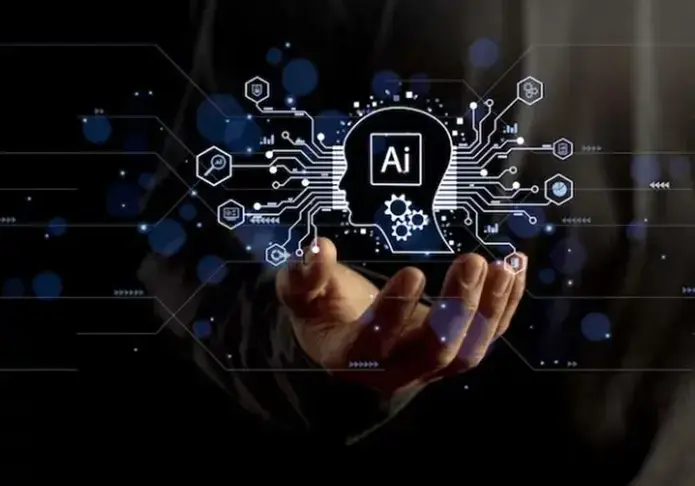Touchless Entry: A New Era of Seamless and Hygienic Attendance Management
Published: Nov 12, 01:04 PM

In today’s fast-paced world, maintaining a safe and efficient workplace is a top priority. As businesses continue to prioritize hygiene and security, touchless entry systems have emerged as a game-changer in attendance management. These systems use advanced technologies, such as RFID, facial recognition, and infrared sensors, to provide seamless and hygienic access control. In this blog, we’ll explore how touchless entry is revolutionizing attendance tracking and its benefits for businesses and employees alike.
The Need for Touchless Entry Systems
The rise of the COVID-19 pandemic highlighted the importance of minimizing physical contact to reduce the spread of viruses. While the primary goal of touchless systems was to enhance hygiene, they also provide significant improvements in efficiency, security, and user experience. Traditional attendance systems, such as punch cards, keycards, and biometric scanners, often require physical interaction, which increases the risk of contamination and can lead to inefficiencies in busy environments.
Touchless entry, on the other hand, allows employees to gain access to restricted areas and record their attendance without touching anything—creating a safer and more convenient experience for all.
How Touchless Entry Systems Work
Touchless entry systems can be broadly classified into several technologies, including:
-
RFID (Radio Frequency Identification)
RFID-based attendance systems use smart cards or wristbands to allow employees to clock in or access a building. These cards communicate with a sensor through radio waves, so there’s no need for direct contact. Simply waving the card near the sensor triggers the attendance recording, making it quick and effortless.
-
Facial Recognition
Leveraging AI and machine learning, facial recognition technology scans employees’ faces to confirm their identity and log attendance. It is one of the most secure and hygienic methods since it doesn’t require any physical contact with the system. Employees simply stand in front of the scanner, and the system verifies their identity in real time.
-
Infrared and Motion Sensors
These sensors detect the presence of employees as they approach entry points, automatically logging their attendance. They are often used in combination with other technologies like RFID or facial recognition to enhance security and accuracy.
-
Voice Recognition
Some systems also offer voice-based entry systems where employees can authenticate themselves via a voice command, eliminating the need for any physical contact or facial scans.
Key Benefits of Touchless Entry Systems
-
Enhanced Hygiene and Safety
Touchless systems significantly reduce the risk of transmitting viruses and germs. Employees no longer need to touch shared devices or keypads, making the workplace safer, especially in high-traffic areas like entrances, elevators, and meeting rooms.
-
Increased Efficiency
Traditional attendance methods, such as manual logging or keycard swiping, can cause delays and congestion. Touchless systems are faster, ensuring a smoother flow of employees entering and exiting the premises. This leads to less time spent on attendance recording and more time for employees to focus on their work.
-
Improved Security
Touchless systems are often integrated with other security features, such as real-time alerts, automated access control, and monitoring. Facial recognition, in particular, offers a high level of security, as it’s difficult for unauthorized individuals to replicate or bypass the system.
-
Convenience for Employees
Employees appreciate the simplicity and speed of touchless systems. Whether they’re rushing to a meeting or arriving for a shift, the convenience of a system that requires no physical interaction helps reduce time spent on manual attendance tracking. Additionally, systems like facial recognition are highly personalized, ensuring that employees only need to be identified once.
-
Reduced Maintenance Costs
Traditional systems, such as fingerprint scanners or punch card machines, often require frequent maintenance and replacement due to wear and tear. Touchless entry systems, especially those that use RFID or infrared sensors, have fewer moving parts, reducing maintenance costs and downtime.
-
Better Data Accuracy and Analytics
Since touchless entry systems automatically log attendance, they minimize the chances of human error, ensuring that data is accurate and reliable. Additionally, many touchless systems come with integrated analytics that can provide businesses with insights on employee attendance patterns, peak times, and areas of improvement.
Use Cases for Touchless Entry Systems
-
Corporate Offices
Touchless entry systems are ideal for corporate offices where employees come and go throughout the day. They can help track attendance, ensure secure access to restricted areas, and reduce time spent on manual check-ins.
-
Factories and Warehouses
In industrial settings where hygiene and speed are critical, touchless attendance systems help ensure smooth operations, especially when employees are handling equipment or machinery and need to avoid contamination.
-
Educational Institutions
Schools, universities, and colleges can use touchless systems to monitor attendance in classrooms, reduce administrative workload, and enhance security on campus.
-
Healthcare Facilities
In hospitals or medical centers, where cleanliness and infection control are a top priority, touchless entry solutions help ensure a safer environment for both staff and patients.
Challenges to Consider
Despite their numerous benefits, touchless entry systems are not without their challenges. Privacy concerns, particularly around facial recognition, are a common issue. Organizations must ensure that data is securely stored and that employee privacy is protected. Additionally, the initial cost of installing touchless systems may be higher than traditional solutions, though the long-term benefits often outweigh this investment.
Conclusion
Touchless entry systems are revolutionizing attendance management by providing a hygienic, efficient, and secure way to track employee attendance. By eliminating physical contact, businesses can enhance safety, improve operational efficiency, and ensure data accuracy. As technology continues to evolve, the future of attendance management will likely be defined by even more innovative solutions that further streamline workplace operations.
Businesses looking to stay ahead in a post-pandemic world should consider adopting touchless entry systems to meet the evolving demands of both employees and customers.



